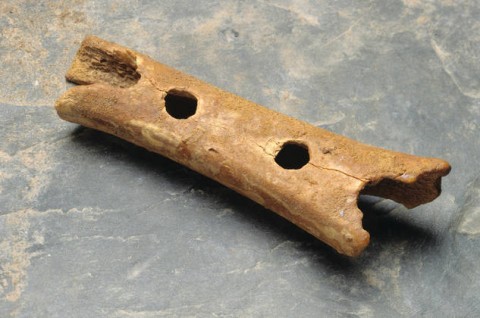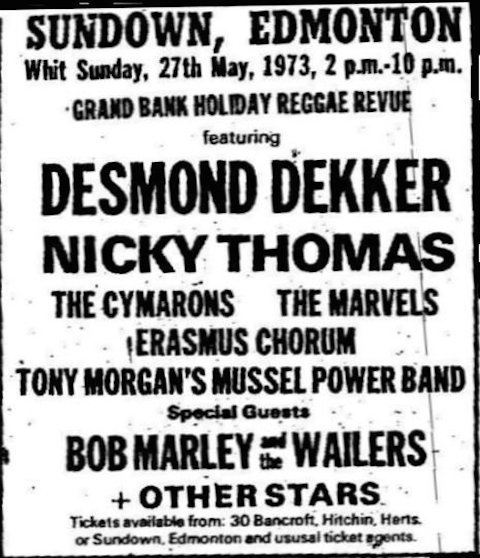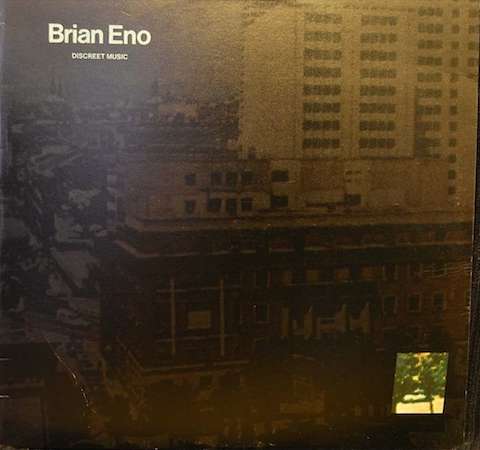It seems like nearly everything that’s ever been recorded eventually makes its way to Youtube—at least for a while. From historic speeches by Gandhi and Martin Luther King, Jr. to the rambling conspiracy theories of obscure basement dwellers, you can hear it all. One particular phenomenon in recent years is that of the “isolated track,” the vocal and individual instrument recordings from well-known songs, usually taken directly from the master tapes. We’ve featured many of these, from famous drummers like John Bonham and Stewart Copeland to bassists like Sting, Paul McCartney, and Queen’s John Deacon.
Today, we bring you isolated tracks from some of rock ‘n’ roll’s most celebrated guitarists, and we do so in full anticipation of a slew of outraged “What about so and so!” comments. So to pre-empt some inevitably hurt feelings, bear in mind that the selection of isolated tracks online is—despite Youtube’s many riches—rather limited. We’re working with what’s available here. And if you don’t see your Joe Pass or Bonamassa—two guitarists I greatly admire—or any other jazz or blues players, it’s because we’re focusing specifically on rock guitarists.
That said, let’s begin with what is arguably the most recognizable guitar line since Jimmy Page’s work in “Stairway to Heaven.” You’ve heard the intro to “Sweet Child O’ Mine” an uncountable number of times—played beautifully by Slash and his talented imitators, and badly by struggling students in music stores. But have you ever really heard what the premier 90s rock guitarist is doing in the rest of the song? Once Axl Rose starts wailing, it’s a bit hard to listen to anything else. So take six minutes and play through the entire isolated track above. It’s a pretty stunning mix of delicate arpeggios, punchy overdriven rhythms, and, of course, the soaring sustained lead lines and wah-wah madness we know from those oh-so memorable solos. OnStage magazine has a nice little breakdown of Slash’s technique and tone. For a very thorough dissection of the exact rig he used in the studio to make these sounds, check out this article.
Before the mighty Slash, the most influential rock guitarist was without a doubt Eddie Van Halen, whose signature maneuvers and technical innovations completely changed how rock and metal guitarists approached the instrument. Van Halen, writes Ultimate Classic Rock, “virtually single-handedly re-invented the entire rock guitar lexicon with his blend of tone, technique and sheer musicality.” He did it two-handedly also, more-or-less inventing two-handed tapping, “a technique in which Van Halen uses the fingers of his right hand to fret notes on the neck of the guitar, which allows him to phrase passages very rapidly without the limitations of a pick.” You can hear several examples in this list of top 10 Eddie Van Halen solos.
Just above, in the isolated guitar track for “Panama,” hear an often unremarked aspect of Van Halen’s playing—his exceptional rhythm work. Punctuated with gritty slides, dives, and bends, and the song’s familiar three-note riff, Van Halen’s rhythms are extraordinarily fluid, musically expressive, and commandingly dynamic. His solo work here is subtle—not nearly as flashy as in so many other songs—but that allows us to focus all the more on how brilliant his rhythm playing really is. Like Slash, Van Halen had to compete with a ridiculously flamboyant singer, and like Slash, he often emerges as band’s real main attraction.
Play “Free Bird,” man. No, I won’t. Well, not the whole thing. But listen to that solo, all 4 plus minutes of it, above, played by Allen Collins. Lynyrd Skynyrd’s three-guitar attack of Collins, Ed King, and Gary Rossington may have seemed extravagant, or just plain indulgent, but it served an important purpose: duplicating the album recordings perfectly onstage. Bandleader Ronnie Van Zandt “was such a stalwart and stickler for perfection—so much so that everyone was supposed to play more or less the same solos they did on the album,” writes the blog One Week//One Band, “because that’s what the audience came to hear.” Collin’s screaming solo—number 3 in Guitar World’s top 100—came about by chance, as did the entire song, in fact, pieced together impromptu by the band during rehearsal. But why does “Free Bird” never, ever seem to end? Rossington has the story:
… We started playing it in clubs, but it was just the slow part. Then Ronnie said, “Why don’t you do something at the end of that so I can take a break for a few minutes?” so I came up with those three chords at the end and Allen played over them, then I soloed and then he soloed… it all evolved out of a jam one night. So, we started playing it that way, but Ronnie kept saying, “It’s not long enough. Make it longer.”
On the studio version, “Collins played the entire solo himself on his Gibson Explorer.” Says Rossington, “He was bad. He was super bad! He was bad-to-the-bone bad… the way he was doin’ it, he was just so hot! He just did it once and did it again and it was done.” And there you have it.
If this list didn’t have any Clapton on it, I’d probably get death threats. Luckily we have an isolated Clapton track, but not from a Clapton band. Instead, above, hear his guest work on the George Harrison-penned and ‑sung Beatles’ song “While My Guitar Gently Weeps” from 1968. In a previous post on this masterfully iconic recording, Mike Springer described Clapton’s technique and gear: “For the impression of a person weeping and wailing, Clapton used the fingers on his fretting hand to bend the strings deeply, in a highly expressive descending vibrato. He was playing a 1957 Gibson Les Paul, a guitar he had once owned but had given to Harrison, who nicknamed it ‘Lucy.’”
I’ll admit, I grew up assuming that Harrison played the leads in this song, an assumption that colored my assessment of Harrison’s playing in general. But while he’s certainly no slouch, even he admitted that this was better left to the man they call “Slowhand” (a nickname, by the way, that has nothing to do with his playing). Typically humble and understated, Harrison described to Guitar World in 1987 how Clapton came to guest on the song:
No, my ego would rather have Eric play on it. I’ll tell you, I worked on that song with John, Paul, and Ringo one day, and they were not interested in it at all. And I knew inside of me that it was a nice song. The next day I was with Eric, and I was going into the session, and I said, “We’re going to do this song. Come on and play on it.” He said, “Oh, no. I can’t do that. Nobody ever plays on the Beatles records.” I said, “Look, it’s my song, and I want you to play on it.” So Eric came in, and the other guys were as good as gold–because he was there. Also, it left me free to just play the rhythm and do the vocal. So Eric played that, and I thought it was really good. Then we listened to it back, and he said, “Ah, there’s a problem, though; it’s not Beatley enough”–so we put it through the ADT [automatic double-tracker], to wobble it a bit.
It’s the wobble, I think that made me think of Harrison, but now listening to it again above, pulled from its Beatley context, I just hear Clapton.
Just above, we have a guitarist most people have probably never heard of. But for certain 90s music fans and players, myself included, John Squire was an unsung hero of a British band many felt deserved more attention than Blur and Oasis combined. I’m talking about The Stone Roses, Madchester colleagues of bands like The Happy Mondays and The Chameleons. Although the scene as a whole thrived on sixties-revival dance grooves with harder drugs, Squire stood out for his quiet self-confidence, second career as a painter, and bluesy, Hendrix-inspired playing. I learned by heart his outro solos on the band’s barnburner “I Am The Resurrection,” a wickedly inventive bit of work that anyone who knows the band knows well.
Unfortunately, the follow-up to their 1989 self-titled debut, 1994’s The Second Coming, was critically shunned and almost ignored by former fans. Unfortunate timing, I’d say. Jack White and the Black Keys had yet to make blues rock cool again, and the band had mostly moved from playing like the Byrds to playing like the Yardbirds. Just above from that unloved second and final record, hear Squire’s isolated playing on “Love Spreads,” a song second only to “Driving South” as the band’s most potent appropriation of the blues. Squire, in my book, is a criminally underrated guitarist who did some of his best work on a criminally underrated album.
Finally, some excellent guitar work by a guitarist I love, playing with a band I don’t. But as much as I may dislike the Red Hot Chili Peppers songs, I stand in awe of their mind-blowing musicianship. While bassist Flea gets most of the attention, their longtime on-again, off-again guitarist John Frusciante is just as much, if not more, of a standout player. A musical prodigy, Frusciante—who replaced Hillel Slovak after the latter’s 1988 overdose—joined the band at just 18 and completely transformed their sound overnight with, writes Rolling Stone’s David Fricke, “Hendrixian force.”
In RHCP’s once inescapable ballad—“Under the Bridge”—he concocts a “poignant Beatlesque melody” joined with funk licks and chorus-drenched chordal phrases. Frusciante plays with a distinctive personality that’s instantly recognizable, whether it’s with the Chili Peppers, The Mars Volta, Duran Duran (!), or his own totally oddball solo records. An always unpredictable musician, his once amateurish experiments with electronic music have grown into full-blown acid house that sounds nothing like John Frusciante. Great stuff, but I hope he picks up the guitar again soon.
So yeah, I could have included isolated tracks from Dimebag Darrell or Jake E. Lee, brilliant guitarists both. And lots of people seem to like those Avenged Sevenfold guys, though it ain’t my cuppa tea. But this list is just a sampling and doesn’t pretend to be complete by any stretch. If you happen to find some isolated guitar tracks online that you think our readers should hear, by all means post them in the comments.
Related Content:
Hear Isolated Tracks From Five Great Rock Bassists: McCartney, Sting, Deacon, Jones & Lee
Isolated Drum Tracks From Six of Rock’s Greatest: Bonham, Moon, Peart, Copeland, Grohl & Starr
Josh Jones is a writer and musician based in Durham, NC. Follow him at @jdmagness.




